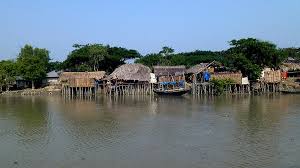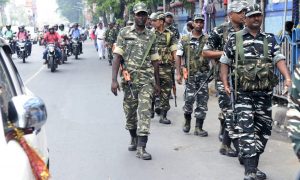Communist Chief Minister Jyoti Basu is remembered as the person who ruled for the longest time in the history of the country, but today we also tell you another reason why both the Left and Congress hide together. In fact, in 1979, with Jyoti Basu as Chief Minister, there was a massacre in Jallianwala Bagh in West Bengal in which around 3000 Dalit Hindu Bengali refugees were shot by the police. Azad is by far the largest massacre by police in India. There is a place in West Bengal where two streams of the Ganges meet at Hooghly and Pa Samundar. Here is a deserted marshy island of Marichjhapi. It is here that the leftist government of the then Jyoti Basu killed thousands of Hindu refugees only because they voted against the partition of India.

In 1979, the police and CPM cadres of the then Jyoti Basu government did not find any other example of the cruelty of Bangladeshi Hindu refugees. Dozens of people jumped into the sea to save their lives. So far, there is no concrete data as to how many people died in the Marichchapi massacre. Witnesses estimate that more than 3000 people died during this period. People were not being given citizenship due to their subsequent arrival from Bangladesh (then East Pakistan). During the 1971 war, more than one crore Hindu refugees came to India, most of whom were from the Shudra or Dalit community. The Government of India kept them in camps and did not give citizenship. Nearly 40,000 refugees fled Bangladesh on an island called Marichjhapi in the swampy Sundarbans delta of West Bengal.

After the division of Bengal (during independence in 1947) along communal lines many Hindu Bengalis fled East Pakistan (now Bangladesh). The first flow of refugees who were mostly the upper and middle classes from upper castes easily resettled in West Bengal. However most lower caste Hindus remained behind, However they too were persecuted by Muslims and were forced to flee to West Bengal as well. But this latter huge flow of poor, mostly low-caste Hindus 51 couldn’t be accommodated in Bengal. This later surge reached its peak in 1970’s. During this time in 1976 Ram Niwas Mirdha said in Loksabha that Bengal had become saturated and relocating migrants was inevitable.
Most of the refugees from Bangladesh came from extremely poor families and Dalit communities. The Left parties, which claim to be the party of the poor, downtrodden, deprived and working class, promised citizenship to the refugees when they come to power. The Left party reiterated this after the government came in 1977. After this, Bangladeshi Hindus living in Chhattisgarh, Dandakaranya, Assam and other areas migrated to Bengal. But seeing no help, they made their hideout in the deserted swamp island of Marichjhapi. The refugee Dalit Hindus opened their own school on this island, where they started farming and also built a small hospital for their treatment, but the communist government was very angry with their vote against the partition of Bengal and they took revenge for it. .. Thousands of policemen fired bullets in broad daylight on 40,000 people and around 3000 people were killed in this massacre.
Survivors claim that on the morning of 31 January 1979, when some women tried to row boats to the next island to fetch drinking water, grains and medicine, the police rammed their launches into the boats and drowned all three. People who took boats into the river to save the drowning women were fired on by the police. Police continued attacking people who braved the action and took multiple boat trips back and forth to get the necessities. This ultimately resulted in a confrontation between refugees armed with crude implements like bows and arrows, lathis, bricks and stones, on one hand, and the police on the other.
(All information is taken from kreately NEWS,. & Other sources)






















 WhatsApp us
WhatsApp us
Pingback: 1signification